#paqos
Explore tagged Tumblr posts
Text
Inca Medicine: Healing the Heart, Body, and Spirit

Have You Ever Felt Lost, Tired, Or Just Not Yourself? Like Something Deep Inside You Is Out Of Balance? Many People Feel That Way These Days. Life Can Be Stressful, Noisy, And Sometimes, It’s Easy To Feel Disconnected—From Others, From Nature, And Even From Your Own Heart.
That’s Why More And More People Are Turning To Something Ancient And Powerful: Inca Medicine. This Is Not Modern Medicine With Pills Or Machines. It's Something Much Deeper. It's A Way Of Healing That Comes From The Land, The Spirits, And The Heart.
Let’s Talk About What Inca Medicine Really Is—And Why It’s Changing Lives Around The World.
What Is Inca Medicine?
Inca Medicine Comes From The Inca People, Who Lived In The Andes Mountains Of Peru Long Ago. But The Truth Is, It’s Not Gone. Their Healing Ways Are Still Alive Today—Passed Down From Teacher To Student, From Family To Family.
This Kind Of Healing Is Not Just For The Body. It Helps Your Whole Self—Your Body, Your Emotions, Your Energy, And Your Soul. It's About Finding Balance And Peace Inside And Around You.
Inca Healers Believe Everything Is Connected: People, Nature, The Earth, The Sky, And The Spirits. When One Part Is Hurt Or Out Of Balance, The Whole Person Suffers. So, Inca Medicine Helps Bring Everything Back Into Harmony.
Healing With Nature And Spirit
In Inca Medicine, Healers Use Things From The Earth—Like Plants, Stones, And Water. They Also Work With Energy, Prayer, And Ceremonies To Help People Heal.
They May Use:
Sacred Plants Like Coca Leaves Or Special Herbs
Feathers, Flowers, Or Stones
Smoke From Burning Wood Or Plants
Prayers And Songs That Call On The Spirits Of Nature
One Of The Most Important Ideas In This Healing Is Pachamama Mother Earth. She Gives Life, And When We Respect Her, She Helps Us Heal.
How Inca Healers Help People
Healers In Peru Called Curanderos Or Paqos Don’t Just Treat Sickness. They Help People Feel Whole Again. They Listen. They Pray. They Clean Your Energy. They Guide You Through Changes In Life.
Here Are Some Common Ways They Help:
1. Limpia – Energy Cleaning
This Is Like A Spiritual Shower. The Healer Helps Remove Heavy, Dark Energy That May Be Making You Feel Sad, Stuck, Or Sick. People Often Cry Or Feel Lighter After A Limpia. It’s A Deep Emotional Release.
2. Coca Leaf Reading
The Healer Throws A Handful Of Coca Leaves And Reads Them, Like A Map Of Your Soul. They Might Tell You What’s Blocking Your Path, Or How To Move Forward. It’s Not Magic—It’s Spiritual Guidance.
3. Despacho Ceremony
This Is A Beautiful Ritual To Thank The Earth And Ask For Balance In Your Life. The Healer Builds A Small Offering With Flowers, Seeds, And Prayers, Then Burns Or Buries It. It’s Like Giving A Gift To The Earth, And Asking Her To Help You Heal.
4. Plant Medicine Ceremonies
Sometimes, Healers Use Sacred Plants Like San Pedro Or Ayahuasca In A Guided Ceremony. These Plants Open Your Heart And Mind So You Can Face Deep Pain And Find Healing. But These Ceremonies Are Serious—They Must Be Done With Respect, In A Safe And Sacred Space.
Real People, Real Healing
Many People From The US, Peru, And All Over The World Have Shared How Inca Medicine Changed Their Lives.
One Man From The USA Went To Peru After Years Of Feeling Lost And Sad. After A Despacho Ceremony And A Plant Medicine Journey, He Said, “I Felt Like I Came Home To Myself.” He Cried, Forgave, And Smiled Again—For The First Time In Years.
A Woman From Lima Had Been Struggling With Anxiety. After Just One Limpia And Coca Reading, She Said It Was Like “A Weight Lifted Off My Chest.” She Started Sleeping Better And Feeling More Hopeful.
Why More People Are Choosing Inca Medicine
These Days, People Want More Than Just Pills Or Quick Fixes. They Want Healing That Touches The Heart And Soul. They Want To Feel Connected Again—To Their Families, Their Purpose, And To Nature.
Inca Medicine Gives Them That. It’s Not About Hiding Pain. It’s About Facing It With Love, And Letting It Go With The Help Of Something Bigger.
It’s Honest. It’s Deep. And It Works.
How To Try Inca Medicine Yourself
You Don’t Have To Be Sick Or Broken To Try Inca Medicine. Many People Just Want To Feel More Alive, More Grounded, Or More At Peace.
If You’re Curious, You Can:
Join A Healing Retreat In Peru
Work With A Trusted Inca Healer Online Or In Person
Try A Despacho Ceremony Or Energy Cleaning
Learn More About The Andean Way Of Living In Harmony
Make Sure You Choose A Healer Who Is Respectful, Trained, And Comes From A True Tradition. This Work Is Sacred And Should Be Done With Care.
You Can Explore More About It Here.
Inca Medicine: A Gift From The Past That Heals Today
In A World That Moves Too Fast, Where People Feel Disconnected And Tired, Inca Medicine Offers Something Rare: Peace, Purpose, And Deep Healing.
It Doesn’t Matter Where You’re From Or What Your Story Is. If Your Heart Is Open, If You're Ready For Change, This Path Can Help You. Sometimes, Healing Starts Not With Doing—But With Listening, Breathing, And Remembering Who You Are.
Are You Ready To Begin Your Healing Journey? Take The First Step. Learn More, Connect With A Healer, Or Even Plan A Visit To Peru. Your Soul May Be Waiting For It.
#HealingJourney#EmotionalHealing#SpiritualAwakening#EnergyHealing#MindBodySoul#InnerPeace#DeepHealing#SacredMedicine#HeartCentered#AwakenYourSpirit#NatureHeals#PlantMedicine#AyahuascaHealing#SanPedroMedicine#EarthMedicine#CocaLeafWisdom#HealingWithPlants#SacredPlants#ForestWisdom#NaturalRemedies
0 notes
Text
Spiritual Offerings at the High Passes Many Andean pilgrimages begin or pause at the highest points of the trails—places where sky, stone, and spirit meet. Known as apus, these mountain spirits are still honored today with offerings of coca leaves, flowers, and prayers. These rituals are not tourist attractions, but genuine acts of gratitude and connection with the natural world.
With an All-inclusive Machu Picchu package, travelers may have the unique opportunity to witness or even participate in such a ceremony. In partnership with local communities and Andean priests (paqos), some packages offer culturally respectful access to traditional rites, held before a major ascent or at sacred rest points along the Inca Trail.
These moments become the soul of the journey—quiet, humble, and filled with meaning. To kneel before the mountain, to feel the thin air and offer thanks, connects you to a lineage of walkers and seekers across centuries. It’s the kind of moment that can’t be planned by guidebooks but is made possible when a travel experience is deeply curated and guided with reverence.
0 notes
Text
Andean Gastronomy and Healing Traditions in the Sacred Valley
When exploring the Sacred Valley, travelers often focus on its archaeological wonders, but its cultural heritage extends far beyond its ruins. The valley is a treasure trove of Sacred Valley and Andean traditions, especially in the realms of food, medicine, and holistic healing practices.
One of the most significant aspects of Andean culture is its unique gastronomy, which is deeply tied to the land. Ancient agricultural techniques developed by the Incas allowed them to cultivate a wide variety of crops despite the valley’s challenging terrain. Today, the region produces over 4,000 types of potatoes, along with quinoa, kiwicha, and native corn varieties. Many of these ingredients are still prepared using time-honored methods, such as cooking in pachamanca, a traditional underground oven made of hot stones. This method dates back to pre-Inca times and is still used in family gatherings and special ceremonies.
Beyond food, traditional medicine plays a crucial role in the preservation of Sacred Valley and Andean traditions. Healers, known as paqos or curanderos, use centuries-old knowledge to treat ailments with medicinal plants, spiritual cleansings, and energy work. Some of the most commonly used herbs include muña, a mint-like plant for digestion; chachacoma, a remedy for altitude sickness; and San Pedro cactus, often used in spiritual ceremonies to connect with higher realms.
For those seeking a deeper experience, participating in a plant medicine ceremony led by a knowledgeable shaman offers a unique perspective on Andean spirituality. Ayahuasca and San Pedro ceremonies are becoming more popular among visitors who want to explore personal healing and self-discovery in the Sacred Valley’s powerful landscapes.
These gastronomic and medicinal traditions are not just remnants of the past—they are integral to Andean identity and continue to shape the lives of the Sacred Valley’s communities today.
0 notes
Text
🌞 Andean Wisdom: Life Lessons from the Shamans of the Sacred Valley 🌞
Andean shamans, also known as Paqos, are the keepers of a sacred wisdom passed down through generations. Their knowledge teaches us how to live in harmony with the Earth and ourselves.
Key Lessons from Andean Shamans
🍃 Pachamama (Mother Earth) is our greatest teacher – Honor and respect the natural world. 🔥 Everything is energy – What we give is what we receive. 🌊 Surrender to the flow of life – Trust in divine timing and balance.
Learn from Authentic Shamans at Wayra Spirit Healing
Join us in the Sacred Valley of Peru, where you will connect with the wisdom of the ancients and uncover the spiritual secrets of the Andes.
0 notes
Text
India is a vast country both in terms of geography and demography. There is not one but multiple reasons for the water situation to be worsening without any water solution.
For more information read our informative blog about India And Its Hard Water Crisis
0 notes
Text
I like how i can actually tag both people that inspired this comic @supaisaiah016 @paqoe

this blew up on gdtwt so i’m kinda wondering how it will do here
434 notes
·
View notes
Text
97 AÑOS DE LA SUBLEVACIÓN CAMPESINA DE HUANCHO LIMA #huanchoLima
Fernando Chuquipiunta
La llamada sublevación campesina de Wancho Lima, fue registrada por José Carlos Mariátegui, Jorge Basadre, Wilfredo Kapsoli, Manuel Scorza, Pablo Macera, José Tamayo Herrera, Teobaldo Loayza Obando, Augusto Ramos Zambrano y José Luis Rénique. La frondosa documentación data desde la época de los mensajeros, quienes viajaron a Lima para reclamar al presidente Manuel Gonzáles Candamo, acerca de los abusos de los gamonales de Huancané contra los campesinos quechuas y aymaras.
Debido al liderazgo de Carlos Condorena Yujra, llamado también Carlosín Condorena, cuyo verdadero nombre era Carlos Condori Yujra, es que se formó un grupo de personas decididas a acabar con el gamonalismo en el departamento de Puno. Evaristo Corimayhua Carcasi, Mariano Luque Corimayhua, Pedro Nina Cutipa Corimayhua, Melchor Cutipa Luque, Antonio Francisco Luque Luque, Mariano Mercedes Pacco Mamani y Rita Puma, se convirtieron en líderes de un movimiento que, además, se propuso establecer una educación bilingüe, como recuperar las tierras arrebatadas por los gamonales a las comunidades campesinas.
En un principio contaron con la simpatía del presidente Augusto Bernandino Leguía y Salcedo, quien auspiciaba desde el gobierno un indigenismo oficial y subalterno. Los dirigentes de Huancho decidieron entonces, construir una ciudad con los mismos planos urbanos de Lima y le pusieron el nombre de Huancho Lima, capital de la República Aymara Tahuantisuyana y lugar emblemático de la reivindicación de los derechos ciudadanos de la cultura aymara. Construyeron locales para ministerios, escuelas, mercados, calles y avenidas.
Todo estaba decidido para atacar a Huancané y diezmar a la población. Pero ese hecho fue impedido por las lluvias que provocaron que el río Huancané creciera, arrastrando muchas balsas llenas de personas. El domingo 16 de diciembre de 1923, a las 10 de la mañana, muchas personas murieron a causa de las balas de fusiles y ametralladoras, también se produjo un gran incendio de todas las casas de Huancho.
Nunca se supo cuántos muertos hubo. El éxodo fue enrome y ese acontecimiento ha sido registrado magistralmente por el escritor huancaneño José Luis Ayala Olazával, quien ha publicado: Wancho Lima (cronivela), Yo fui canillita de José Carlos Mariátegui. (Auto) biografía de Mariano Larico Yujra (testimonio), Fusilamiento y resurrección de Mariano Paqo (novela corta), Celebración cósmica de Rita Puma (poesía), El presidente Carlos Condorena Yujra (historia) y Saturnino Corimayhua. Testimonio de lucha de un campesino del siglo XX (entrevista).
Además, sin la contribución de Vicente y Julio Mendoza Díaz, Leonidas Cuentas Gamarra, Juan Luis Ayala Loayza, Felipe Sánchez Huanca, Augusto Ramos Zambrano, Leoncio Mamani Coaquira, Julio Volodia Mendoza Aparicio, pero especialmente de José Luis Ayala Olazával, sin duda que se hubiera perdido tanta información histórica. Las nuevas generaciones tienen derecho a conocer el pasado para que no se repitan los mismos errores. Finalmente, no hay pueblo sin historia porque sin ella no es posible, edificar un futuro distinto al oprobioso pasado que se ha vivido.
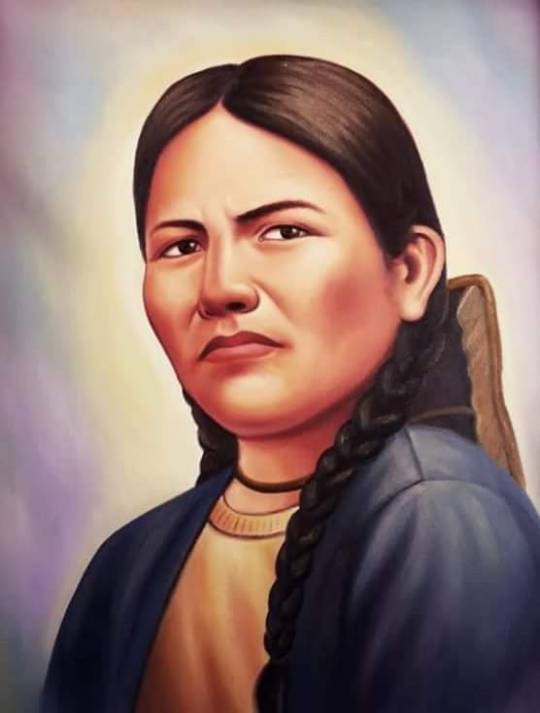
Rita Puma, fundó la Escuela de Chuño-Huyo en Moho.

Histórica Plaza de Huancho Lima, capital de la República Aymara Tahuantisuyana.
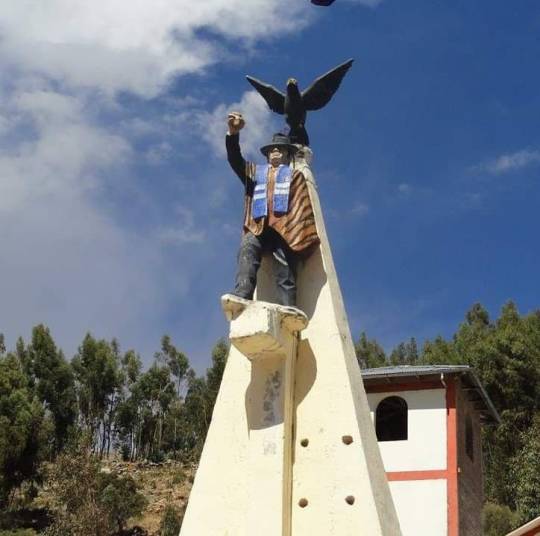
Obelisco que representa la gallardía de los héroes civiles de Huancho Lima.
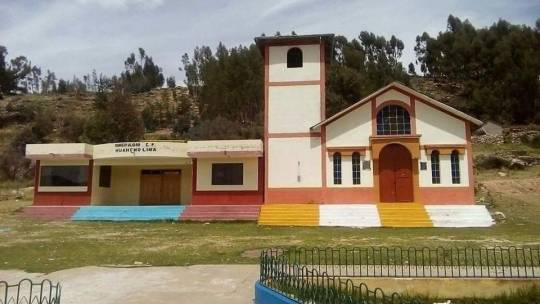
En la puerta de la capilla de Huancho fue fusilado el héroe civil Evaristo Corimayhua Carcasi.
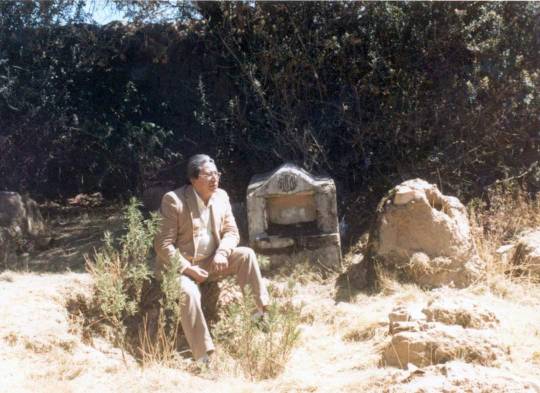
José Luis Ayala Olazával, al pie de la tumba del ideólogo y líder, Carlos Condorena Yujra.
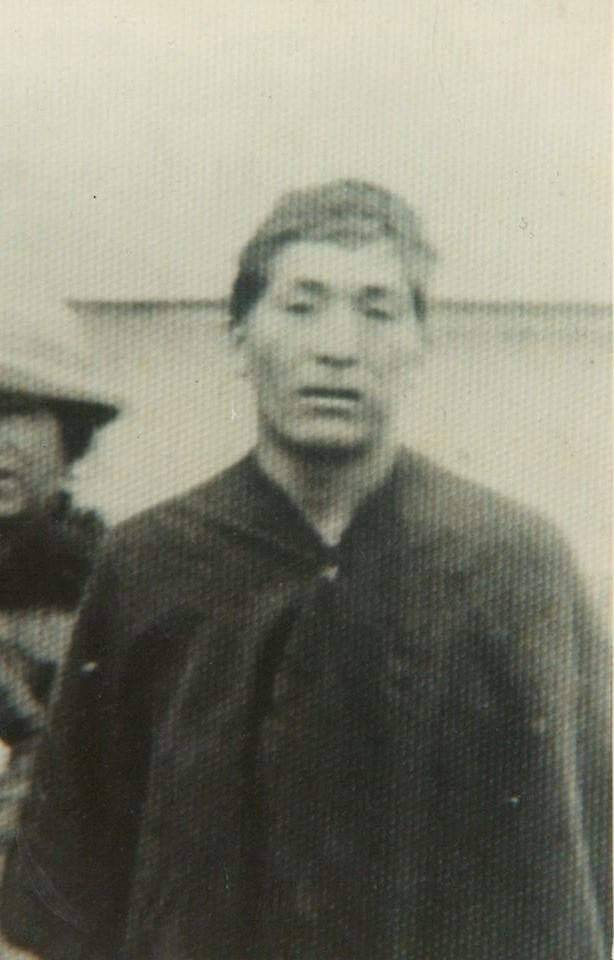
Carlos Condorena Yujra, fue Presidente de la Nueva República Aymara Tawantinsuyana del Perú.

Mariano Pacco Mamani, líder indiscutible de la gesta heroica de 1923.

Antonio Francisco Luque Luque, héroe civil de Huancho Lima.

Mariano Larico Yujra, canillita de José Carlos Mariátegui.

Mariano Luque Corimayhua, fundó la Escuela de Aña Aña en Huancho.
F. Tapia dirigiendo la palabra al gobierno en representación de los componentes del 5 Congreso Indígena 1925 Lima. Carlos Condorena Yucra luce con su pantalón de bayeta de color blanco.
0 notes
Text
Acho Afako Afame Afat'u Afe Afo Afu Ak'aha Ak'ali Ak'aq'o Ak'i Ak'o Akare Ake Akhe Akho Amahe Ana Anu Apape Api Aq'a Aqalu Arahi Aralu Arasu Aro Asak'e Ashaqe Ashi Asi At'ana At'ati At'o Ata Ate Chacho Chafa Chafe Chafi Chahahu Chahashe Chahi Chaho Chahu Chak'apo Chak'o Chakafu Chakama Chakhape Chakhara Chakhi Chakhu Chaki Chalako Chalami Chalashi Chamashi Chamato Chamatu Chane Chapi Chaq'ama Chaq'o Chaqa Chaqasu Charakho Chasafu Chasat'u Chase Chashashi Chasi Chat'a Chat'ache Chat'ati Chat'o Echakha Eche Echi Efakhu Efu Ehe Ehi Ek'e Ek'i Ekafi Ekafu Ekaha Ekhasa Ekhat'o Eko Ela Elana Elano Elaq'o Elashe Ema Emache Emalo Emame Emat'u Emi Ena Enamo Enashi Epa Epasho Epata Eq'apa Eq'aqe Eq'ashe Eq'u Equ Ero Esase Esha Eshano Et'o Eto Facho Fafi Fahahi Fak'aha Fak'ase Fakhapa Fakhi Falak'e Falama Falato Falu Fama Famaqi Fami Fano Fapahe Faparu Faq'e Faq'o Faq'u Faqafo Faqaq'a Faqashu Fara Faro Faru Fasafi Fashu Fasi Fat'a Fat'ak'u Fat'ale Fat'asha Fat'i Fate Fato Fatu Hacha Hacho Hachu Hafaqo Hafi Hafo Hahaso Hahu Hak'o Hakhe Hakhu Haku Halak'u Halari Halatu Hali Halo Halu Hamasa Hamate Hanami Hano Hape Hapu Haq'ale Haq'i Haro Hasacho Hasharo Hashe Hashu Hasi Hasu Hat'a Hat'o Hatafe Hate Hato Ichakho Ichami Ichashu Ifahu Ifi Ihakhe Ihaqe Iho Ihu Ik'ari Ike Ile Ilu Ima Ina Inacha Inakhi Inamo Inu Ipak'u Ipami Iq'ane Iqafa Iqalu Iqasa Iqaso Iqe Ira Irat'a Irate Ire Isaho Ise Ishaka Ishaki Isu It'o Itak'i Itapo Itate Ite Iti Ito K'acha K'aha K'ahaku K'ahari K'ak'ahu K'ak'apu K'ak'i K'ak'o K'akhali K'akho K'akhu K'ako K'aku K'ali K'alu K'amak'o K'amaka K'amanu K'anali K'analo K'anaq'o K'anaro K'apamo K'apashu K'apati K'api K'apo K'aq'a K'aq'ame K'aq'apa K'aq'u K'aqalo K'aqaqo K'aqo K'araqu K'ari K'aro K'asha K'ashafa K'ashat'o K'ashe K'at'akho K'at'ale K'at'ame K'atachu K'atakhe K'ataq'e K'ato Kacha Kachi Kachu Kahama Kahi Kak'aha
Kak'alo Kak'alu Kak'ani Kaka Kake Kakhe Kala Kalama Kali Kamapu Kame Kanafu Kanat'e Kanatu Kane Kano Kapak'a Kapane Kapo Kaq'aru Kaq'ati Kaq'i Kaqaqi Karak'o Karakha Karo Kasachi Kasak'i Kasapa Kasat'a Kasat'o Kasho Kasu Kat'alu Kat'i Kat'o Kata Katafe Kate Kato Khachala Khachare Khache Khachi Khafalu Khafati Khahasha Khahu Khak'o Khakali Khakasi Khakhachi Khaki Khala Khalaq'o Khalu Khamafi Khamato Khame Khamu Khana Khanaka Khani Khano Khapa Khape Khaq'ashe Khaqe Kharachi Kharaki Khashaq'e Khashatu Khasho Khashu Khaso Khat'asu Khat'u Khataka Khate Khatu Lachasu Lache Lahasa Lahi Lak'acho Lak'aqi Lak'u Lakat'u Lake Lakha Lalaku Lalapu Lami Lamu Lanakhi Lanane Lapi Lapo Laq'aso Laq'i Laqa Laqamo Larashu Lasaro Lashacha Lashake Laso Lat'ahu Latakhi Latakho Latali Lataqo Mache Mafari Mahe Mak'acha Mak'asa Mak'ase Mak'at'i Mak'u Makaq'o Makat'i Maki Mako Malachu Malu Mamak'e Mamare Mamato Mame Manak'u Manako Mapaq'e Mapaqe Mapase Mape Mapu Maq'apu Maq'u Maqa Maqasu Maro Maru Masashe Mashale Mashe Mat'ame Mat'aqa Mat'asi Matani Matasu Mate Nachachu Nachu Nafakho Nahake Nahasho Nahe Nahi Naho Nak'ashu Nak'o Nakhafe Nakhu Naki Naku Nala Nalak'a Namafi Nami Nana Nanano Napama Napapa Nape Naq'ano Naq'aro Naq'i Naq'u Naqafe Naqak'a Naqasu Naqe Narahe Narapa Nari Naru Nase Nashaqu Nashu Nat'achu Nata Natafa Ochakhe Ochu Ofa Ofahe Ofanu Ofaqi Ofi Ohako Ohasu Ok'aqo Ok'aru Ok'o Oke Okhamu Okhat'a Okhe Okhi Okho Oki Oko Ola Omaqu Omi Onak'o Oni Opa Opahe Opata Opati Oq'at'o Oq'i Oq'o Oqachi Oraq'u Osa Oshe Oshi Ot'e Ota Otaqa Pachu Pafak'u Pafalu Pafat'u Paha Pak'aki Pak'ane Pakafa Pakat'i Pakhara Pako Palaho Pama Pamafa Pamaka Pamo Pano Papala Papashi Papato Pape Papo Papu Paq'ahu Paq'ak'u Paq'o Paqa Paqak'u Paqo Parafi Paraqe Paraqo Pashaka Pashatu Pat'ato Pat'e Patake Patama Pati Q'ache Q'afa Q'afapi Q'afapu Q'aho Q'ak'afi Q'ak'u Q'akasa Q'akhaha Q'akhe Q'aki Q'aku Q'alapa Q'ale Q'alo Q'amak'e Q'anu Q'apata Q'apu Q'aq'a Q'aq'aru Q'aq'asha Q'aq'ate Q'aq'e Q'aqu Q'ari Q'ashi Q'at'a Q'at'aki Q'at'aqe Q'ata Q'atakhe Q'atasa Q'ati Q'atu Qachi Qafa Qafaki Qafi Qafo Qahak'a Qahami Qak'akhe Qak'ami Qak'e Qake Qakhe Qakhi Qamanu Qamu Qanaka Qanako Qapu Qaq'ahi Qaq'aru Qaq'e Qaq'o Qaqaro Qara Qarape Qashami Qashi Qaso Qat'ak'i Qat'aka Qat'alo Qato Rachaka Rachaki Rachatu Rafaso Rafat'o Rafe Rafu Raha Rahaho Rahasi Rak'a Rak'asu Raka Rakaku Rakane Rakhaqe Rakhasa Rako Ralak'e Ralama Ranake Ranaru Rapape Raq'i Raqa Raqana Raqaq'e Raqaso Raqe Raqi Rara Rarako Rare Raro Rasacho Rase Rashale Rashu Rat'ati Rataq'e Rataqu Rataro Ratasho Ratata Sacho Safafu Safakha Sahaqe Sahat'i Sahi Sakha Sakhe Sakhi Sako Salat'o Sana Sanama Sanat'u Sanati Sane Sanu Sapa Sapasu Saq'a Saq'aq'o Saqasi Saqato Sara Sasafo Sasha Sashaq'o Sashase Sashu Sat'a Sat'o Sat'u Sata Satacha Satafi Satalo Satasi Satu Shachakhe Shafake Shahashe Shak'ak'i Shak'ale Shakachi Shakakhe Shakaku Shakama Shakhami Shalafe Shali Shalu Shamat'o Shana Shapat'o Shaq'i Shaq'u Shaqaq'e Sharaq'o Sharat'u Shari Sharo Sharu Shasa Shasakha Shasha Shashakho Shashano Shashe Shashu Shasi Shat'a Shat'ata Shat'i Shataqa Shatasha Shatashu Shati Shato T'afa T'afasu T'afat'u T'afata T'afu T'ahu T'ak'afe T'ak'ane T'akari T'akat'o T'akhashi T'aki T'ala T'ami T'anak'i T'anakho T'anapu T'apa T'aq'apo T'aqamo T'aqapi T'aqu T'arapi T'are T'aro T'asak'o T'ase T'ashu T'at'a T'at'e T'ata T'atako Tachali Tacho Tafe Tahi Tak'afa Tak'e Tak'i Tak'o Taka Takana Takha Takhali Takhami Takhaso Takhato Takhe Tako Talakhi Talasha Talat'e Tamachi Tame Tamu Tanato Tape Tapu Taq'aso Taqahi Taqake Taqalu Taqat'e Taqu Tara Taracha Tarakha Tarashi Taro Taru Tasa Tasachi Tashafi Tasu Tat'a Tat'at'o Tat'o Tata Tatachi Tato Uchi Uchu Ufa Ufaho Ufaqo Ufu Uhahu Uk'a Uk'amu Uk'apu Uk'asa Ukali Ukapu Ukha Ukhapo Ukhashe Ukhe Ukho Uki Uko Ulache Ulame Umafu Umi Unakhi Unala Unasi Uni Upasha Uq'acho Uq'ali Uq'i Uqasho Urak'o Urali Urasi Ure Uro Usache Usaq'o Usu Ut'ase Utaka Utaqu Ute Uti
1 note
·
View note
Photo

10 reasons every Indian household needs a water softener | PAQOS
Living in a home in India means dealing with hard water everyday. Having an adequate water softener solution for home is must in our country. Contamination of our water bodies is rising at an alarming rate, which is why most of India consumes a lot of hard water on a daily basis.
Visit - https://bit.ly/3DL0nJk
0 notes
Text
dude i am SO FUCKING HYPED for this new age of longform content. there’s a review of sary never clear, one of congregation, and now one of i hate you
18 notes
·
View notes
Text
PAQOE WAS THE LIST MODERATOR TO MOVE SILENT CLUBSTEP UP THE DEMONLIST LOL
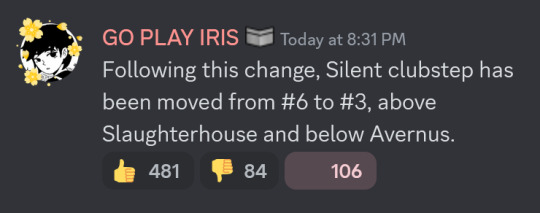
3 notes
·
View notes
Text
The Hidden Oracle of Pachatusan: Sacred Mountains and Living Spirits
Towering over the southeastern sky of Cusco, Pachatusan is one of the most revered apus—mountain spirits—of the region. While it may not be an archaeological site in the traditional sense, this mountain has served as a place of worship and spiritual refuge for centuries. Locals believe Pachatusan to be a powerful guardian, a living entity that protects the valley and connects heaven and earth.
Machupicchu Latin America offers special spiritual journeys that lead visitors to the foothills of Pachatusan, sometimes accompanied by Andean priests (paqos) who perform rituals and give blessings. These experiences open a portal into Andean cosmovision, where mountains are seen not just as geology, but as ancestors and teachers.
In standing before Pachatusan, surrounded by offerings of coca leaves and prayers whispered to the wind, visitors often report a profound emotional response. Thanks to Machupicchu Latin America, these ancient mountain pilgrimages become accessible, immersive, and deeply meaningful—even for those just beginning to explore indigenous Andean spirituality.
0 notes
Text
Silent Clubstep, a Geometry Dash level created 7 years ago, designed to be unbeatable by humans, has been legitimately completed for the first time today! It was verified by the player Paqoe, also known as Zoe, at 1:40 PM EST on July 17, 2022.
This level has had its number of Likes deep in the negatives for 7 years, but this is unfortunately being undone today. It's kind of part of the level's whole schtick now to have it be massively disliked, so please go leave a dislike ❤️
7 notes
·
View notes
Text
SILENT CLUBSTEP VERIFIED OH MY GOD!!!
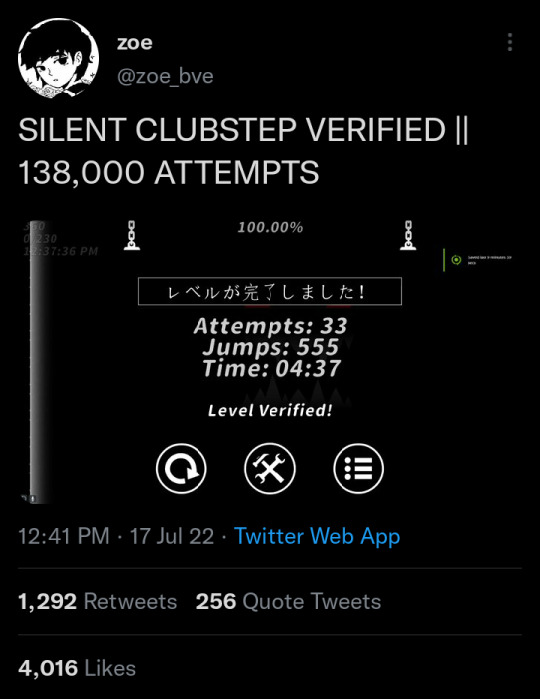
Huge GGs to paqoe!
#geometry dash#silent clubstep VERIFIED#this is actually huge for the community#i almost can't believe it
2 notes
·
View notes
Text
Hard Water Softener Filter for Home and Offices
PAQOS offers a hard water softener filter that converts hard water to soft water. Hard water causes problems for your skin and hair. Visit our official website to learn more about hard water softeners.
#hard water softener#hard water filter#hard water softener for home#softener filter#hard water softener for bathroom#water softener for home india#water softener filter
0 notes






